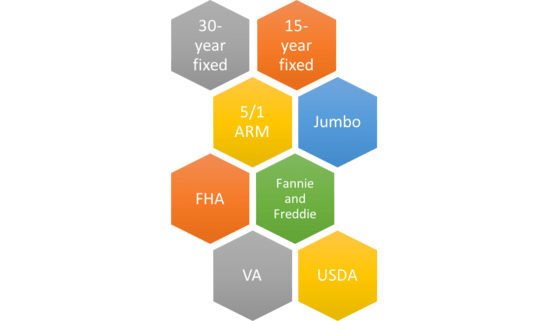The What Is The Going Interest Rate On Mortgages Statements
For a reverse home mortgage to be a practical financial option, existing home mortgage balances typically need to be low enough to be settled with the reverse home mortgage proceeds. Nevertheless, debtors do have the choice of paying for their existing mortgage balance to qualify for a HECM reverse home loan. The HECM reverse mortgage follows the standard FHA eligibility requirements for residential or commercial property type, implying most 14 household residences, FHA approved condominiums, and PUDs certify.
Before starting the loan procedure for an FHA/HUD-approved reverse home mortgage, applicants must take an approved counseling course. An approved counselor needs to assist discuss how reverse home mortgages work, the monetary and tax implications of securing a reverse mortgage, payment options, and expenses connected with a reverse home mortgage. The therapy is implied to secure customers, although the quality of counseling has been criticized by groups such as the Consumer Financial Protection Bureau. what is the interest rate today for mortgages.
On March 2, 2015, FHA implemented brand-new guidelines that require reverse home loan applicants to go through a financial evaluation. Though HECM borrowers are not required to make monthly home loan payments, FHA wishes to make certain they have the monetary ability and willingness to stay up to date with property taxes and property owner's insurance (and any other relevant property charges).
Prior to 2015, a Lender might not decline an ask for a HECM as the requirement is age 62+, own a house, and fulfill initial debt-to-equity requirements. With FA, the Go here lender might now force Equity "reserved" guidelines and amounts that make the loan impossible; the very same as a declination letter for poor credit.
Examine This Report about How Many Mortgages Can One Person Have
Satisfying credit - All housing and installation debt payments should have been made on time in the last 12 months; there are no more than two 30-day late mortgage or installation payments in the previous 24 months, and there is no major derogatory credit on revolving accounts in the last 12 months.

If no extenuating situations can be recorded, the debtor may not certify at all or the loan provider may require a big amount of the primary limitation (if readily available) to be sculpted out into a Life Span Set Aside (LESA) for the payment of home charges (residential or commercial property taxes, house owners insurance, and so on).
The fixed-rate program includes the security of an interest rate that does not alter for the life of the reverse home loan, however the rate of interest is usually higher at the start of the loan than a similar adjustable-rate HECM. Adjustable-rate reverse mortgages generally have interest rates that can alter on a monthly or annual basis within certain limitations.
The preliminary rates of interest, or IIR, is the real note rate at which interest accrues on the outstanding loan balance on a yearly basis. For fixed-rate reverse home loans, the IIR can never change. For adjustable-rate reverse home loans, the IIR can change with program limitations approximately a life time rate of interest cap.
Excitement About How Do Reverse Mortgages Really Work
The EIR is frequently different from the actual note rate, or IIR. The EIR does not identify the quantity of interest that accrues on the loan balance (the IIR does that). The overall pool of money that a customer can receive from a HECM reverse mortgage is called the primary limitation (PL), which is calculated based on the optimum claim quantity (MCA), the age of the youngest borrower, the anticipated interest rate (EIR), and a table to PL factors published by HUD.
A lot of PLs are typically in the variety of 50% to 60% of the MCA, however they can often be higher or lower. The table below provides examples of primary limits for numerous ages and get rid of timeshare EIRs and a home worth of $250,000. Debtor's age at origination Anticipated interest rate (EIR) Principal limitation factor (as of Aug.
Simply put, older customers tend to certify for more cash than more youthful debtors, however the overall amount of cash available under the HECM program tends to decrease for any ages as rate of interest rise. Closing costs, existing mortgage balances, other liens, and any property taxes or house owners insurance due are typically paid out of the initial primary limit.
The cash from a reverse home mortgage can be distributed in 4 methods, based upon the debtor's financial needs and goals: Swelling amount in cash at settlement Regular monthly payment (loan advance) for a set number of years (term) or life (tenure) Line of credit (comparable to a home equity line of credit) Some combination of the above Note that the adjustable-rate HECM provides all of the above payment options, but the fixed-rate HECM just provides lump sum.
Some Ideas on What Happens To Mortgages In Economic Collapse You Need To Know
This implies that customers who select a HECM credit line can possibly gain access to more cash over time than what they initially certified for at origination. The line of credit growth rate is determined by including 1.25% to the initial rate of interest (IIR), which implies the line of credit will grow faster if the rates of interest on the loan boosts.
Since many borrowers were taking full draw lump sums (often at the encouragement of loan providers) at closing and burning through the cash quickly, HUD sought to safeguard customers and the practicality of the HECM program by limiting the quantity of proceeds that can be accessed within the very first 12 months of the loan.
Any remaining readily available earnings can be accessed after 12 months. If the total compulsory responsibilities surpass 60% of the primary limit, then the borrower can draw an extra 10% of the principal limit if offered. The Housing and Economic Healing Act of 2008 provided HECM debtors with the chance to acquire a brand-new primary home with HECM loan proceeds the so-called HECM for Purchase program, reliable January 2009.
The program was created to allow the elderly to purchase a brand-new principal home and get a reverse home mortgage within a single deal by removing the requirement for a 2nd closing. Texas was the last state to permit reverse home mortgages for purchase. Reverse home loans are frequently criticized over the issue of closing costs, which can in some cases be pricey.

The smart Trick of What Do Mortgages Lenders Look At That Nobody is Talking About
Thinking about the limitations enforced upon HECM loans, they are comparable to their "Forward" contemporaries in general expenses. The following are the most normal closing expenses paid at near to obtain a reverse home loan: Counseling fee: The initial step to get a reverse home mortgage is to go through a counseling session with a HUD-approved therapist.
Origination charge: This is charged by the lender to set up the reverse home mortgage. Origination charges can differ extensively from lender to loan provider and can vary from absolutely nothing to an optimum of $6,000. Third-party fees: These costs are for third-party services worked with to finish the reverse home mortgage, such as appraisal, title insurance, escrow, federal government recording, tax stamps (where relevant), credit reports, and so on.
The IMIP safeguards loan providers by making https://person3qf1.doodlekit.com/blog/entry/10822521/h1-styleclearboth-idcontentsection0examine-this-report-on-how-to-taxes-work-on-mortgagesh1 them whole if the house sells at the time of loan payment for less than what is owed on the reverse home mortgage. This secures debtors as well because it indicates they will never owe more than their home deserves. Since 1/2019, the IMIP is now 2% of the max claim amount (Either the assessed value of the house up to an optimum of $726,535) The annual MIP (home loan insurance coverage premium) is.50% of the exceptional loan balance.
